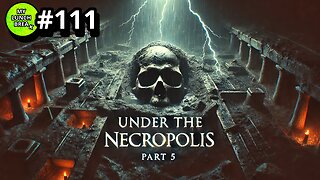Premium Only Content

Sleep Behavior of Dogs
Canine Sleep Behavior
There’s no doubt about it: dogs sure know how to sleep. The amount of time spent napping varies from dog to dog and depends on the dog’s age and personality. Counting little naps and longer snoozes, most dogs sleep about fourteen hours a day.
Why Do Dogs Sleep So Much?
Nobody is sure why dogs sleep so much. The amount of sleep that an animal needs depends upon its species. Horses and cows may sleep only three or four hours daily, because they require long hours of grazing to supply their bodies with sufficient food. Bats and opossums may sleep closer to 20 hours.
The various breeds of dogs also seem to have different sleep requirements. Some very large breeds of dogs, like Newfoundlands, Saint Bernards, and mastiffs, often spend a great deal of their lives sleeping – perhaps up to sixteen or even eighteen hours a day. For this reason they were often referred to as “mat dogs,” because they could always be found lying in front of the fireplace, much like a giant, furry hearth mat.
Dogs sleep more than us, but they wake more frequently than we do. How much and when they sleep depends on the level of activity in their environment. A dog living as a pet in the home is likely to sleep more than a dog that works for a living, like a search and rescue dog or a dog working on a farm. Dogs are lucky – they are able to adjust their sleep pattern so that they can be awake when there is something to do, and asleep the rest of the time.
Of course, today’s modern indoor dog sometimes sleeps out of boredom. You can help your pet by providing plenty of stimulation during the day – this can be in the form of toys, a companion, or plenty of walks and playtime with you. If he has enough to do during the day, he may stay awake when the sun is up and sleep at night when you do.
Normal Dog Sleep Patterns
Dogs have the same sleep patterns as humans. When your dog first goes to sleep, he enters the slow wave or quiet phase of sleep. He lies still and is oblivious to his surroundings. His breathing slows, his blood pressure and body temperature drop, and his heart rate decreases.
After about ten minutes, your dog enters the rapid eye movement (REM) or active stage of sleep. He rolls his eyes under his closed lids, he may bark or whine, or may jerk his legs. During this stage, the brain activity is similar to that seen during the dreaming sleep of humans, and is evidence that dogs have dreams.
Incidentally, adult dogs spend about 10 to 12 percent of their sleeping time in REM sleep. Puppies spend a much greater proportion of their sleep time in this type of sleep, no doubt compacting huge quantities of newly acquired data.
Where Dogs Sleep
You may think your dog will sleep anywhere, but some dogs are very particular about where they sleep. In the wild, dogs sleep in dens, and your dog may seek out a sheltered place in your home, such as under a bed or in a closet. You may notice your dog circling or pawing at his sleeping place before he settles. This is to make a comfortable, den-like depression in which to sleep (even though it doesn’t have much impact on a short pile rug).
You can make a comfortable bed for your dog or choose from the variety of plush beds at your pet store. Some people love snuggling up to their dogs at night and there is no question dogs love sharing their owners’ bed. Advocates of this method say it strengthens the human-canine bond – not to mention the comfort and warmth your dog can provide for you. However, some animal behaviorists say this can upset the sometimes precarious hierarchy, because the dog may get delusions of grandeur. In other words, he may think he is higher on your household’s social scale than some other members of the family. Four-on-the-floor may be the order of the day for some of these characters.
-
 0:15
0:15
Funny Animal's
3 years agoHow cute dogs sleep
294 -
 54:05
54:05
TheGetCanceledPodcast
3 hours ago $2.22 earnedThe GCP Ep.11 | Smack White Talks Smack DVD Vs WorldStar, Battle Rap, Universal Hood Pass & More...
22.3K7 -
 13:37
13:37
Exploring With Nug
7 hours ago $1.63 earnedSUV Found Underwater Searching For Missing Man Jerry Wilkins!
16.1K -
 LIVE
LIVE
xBuRnTx
2 hours ago1st Warzone Stream Online
403 watching -
 6:10:21
6:10:21
JdaDelete
1 day ago $1.67 earnedDino Crisis - Sega Saturday
19.3K1 -
 23:22
23:22
MYLUNCHBREAK CHANNEL PAGE
1 day agoUnder The Necropolis - Pt 5
28K10 -
 2:26:11
2:26:11
Jewels Jones Live ®
1 day agoWINNING BIGLY | A Political Rendezvous - Ep. 108
70K30 -
 2:04:49
2:04:49
Bare Knuckle Fighting Championship
4 days agoBKFC FIGHT NIGHT MOHEGAN SUN FREE FIGHTS
22.9K1 -
 25:09
25:09
BlackDiamondGunsandGear
5 hours agoYou NEED to be Training For Whats to Come
16.7K7 -
 20:03
20:03
Sideserf Cake Studio
11 hours ago $1.07 earnedA HUNGRY HUNGRY HIPPOS CAKE THAT ACTUALLY WORKS?
20.8K5